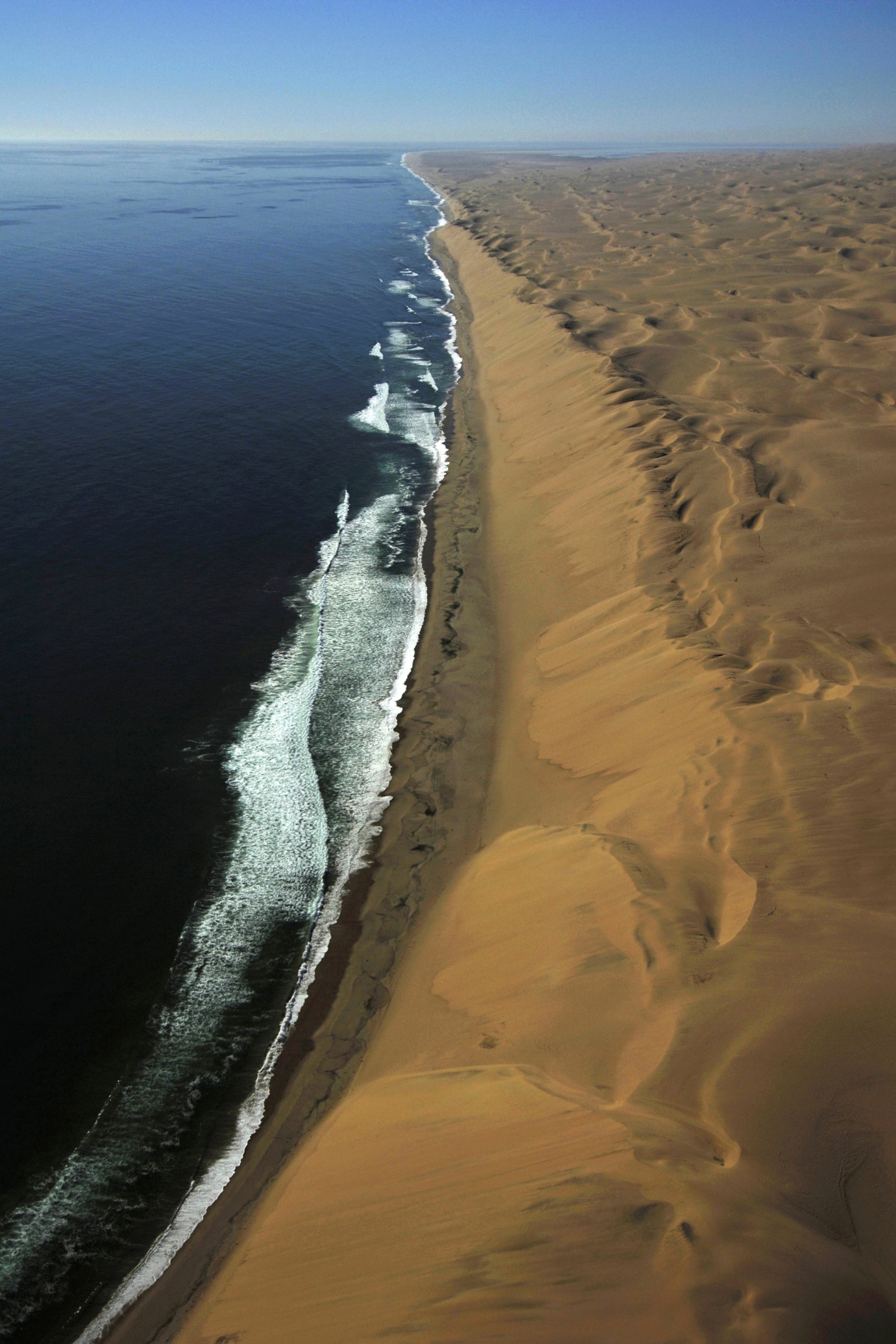

























Amazing Pictures Show Life In One of Earth's Oldest Deserts
Explore the creative sanctuary and unrivaled mystery of the Namibian Desert with photographer Thomas Peschak.
For photographer Thomas Peschak, whose job it is to capture images of the unique and the unexplored, the concept of adventure can almost become routine. Yet Namibia is a destination that he considers unrivaled in its mystery. He calls it “Planet Namibia” and says is the closest he might get to space travel.
Peschak is no stranger to this harsh climate. The vast desert landscape is his self-described “creative sanctuary,” and he’s traveled there 16 times in the last 20 years. “It is a place I hold dear to me."
Peschak has technically lived in South Africa for over two decades, yet admits that most of his time has been spent internationally, much of it underwater. Namibia is his way to reconnect with the continent that he calls home, and a place he visits to find a playfulness in his craft, away from the regimented nature of assignment work.
Road tripping around Namibia is never much of a production for Peschak – he's just looking forward to whatever it is he will see on the way. “It’s much more off the cuff…it’s much more street photography,” he says. You just have to allow yourself to be surprised.
Peschak describes the country as a kaleidoscope of life, where its unique inhabitants have had 55 million years to adapt to the environment of the harsh, ancient Namib desert which is one of the oldest in existence.
The cold waves of the Atlantic ocean provide a vital source of life for Namibian wildlife. The coastal desert can go years without ever seeing a drop of rain. Banks of fog begin to form on the shore, and overnight they drift into the desert where they deposit water droplets on every grain of sand.
Peschak has spent weeks driving along this coast and through the deserts of Namibia, purposefully getting lost and losing himself in the process. He says in a world that continues to become more sanitized and constrictive, Namibia is a wild expanse where Peschak says you can explore and feel like you’re the only person on the planet. “That doesn’t happen very often anymore."
Related Topics
You May Also Like
Go Further
Animals
- This ‘saber-toothed’ salmon wasn’t quite what we thoughtThis ‘saber-toothed’ salmon wasn’t quite what we thought
- Why this rhino-zebra friendship makes perfect senseWhy this rhino-zebra friendship makes perfect sense
- When did bioluminescence evolve? It’s older than we thought.When did bioluminescence evolve? It’s older than we thought.
- Soy, skim … spider. Are any of these technically milk?Soy, skim … spider. Are any of these technically milk?
- This pristine piece of the Amazon shows nature’s resilienceThis pristine piece of the Amazon shows nature’s resilience
Environment
- This pristine piece of the Amazon shows nature’s resilienceThis pristine piece of the Amazon shows nature’s resilience
- Listen to 30 years of climate change transformed into haunting musicListen to 30 years of climate change transformed into haunting music
- This ancient society tried to stop El Niño—with child sacrificeThis ancient society tried to stop El Niño—with child sacrifice
- U.S. plans to clean its drinking water. What does that mean?U.S. plans to clean its drinking water. What does that mean?
History & Culture
- Séances at the White House? Why these first ladies turned to the occultSéances at the White House? Why these first ladies turned to the occult
- Gambling is everywhere now. When is that a problem?Gambling is everywhere now. When is that a problem?
- Beauty is pain—at least it was in 17th-century SpainBeauty is pain—at least it was in 17th-century Spain
- The real spies who inspired ‘The Ministry of Ungentlemanly Warfare’The real spies who inspired ‘The Ministry of Ungentlemanly Warfare’
- Heard of Zoroastrianism? The religion still has fervent followersHeard of Zoroastrianism? The religion still has fervent followers
Science
- Here's how astronomers found one of the rarest phenomenons in spaceHere's how astronomers found one of the rarest phenomenons in space
- Not an extrovert or introvert? There’s a word for that.Not an extrovert or introvert? There’s a word for that.
- NASA has a plan to clean up space junk—but is going green enough?NASA has a plan to clean up space junk—but is going green enough?
- Soy, skim … spider. Are any of these technically milk?Soy, skim … spider. Are any of these technically milk?
- Can aspirin help protect against colorectal cancers?Can aspirin help protect against colorectal cancers?
Travel
- What it's like to hike the Camino del Mayab in MexicoWhat it's like to hike the Camino del Mayab in Mexico
- Follow in the footsteps of Robin Hood in Sherwood ForestFollow in the footsteps of Robin Hood in Sherwood Forest
- This chef is taking Indian cuisine in a bold new directionThis chef is taking Indian cuisine in a bold new direction
- On the path of Latin America's greatest wildlife migrationOn the path of Latin America's greatest wildlife migration
- Everything you need to know about Everglades National ParkEverything you need to know about Everglades National Park




